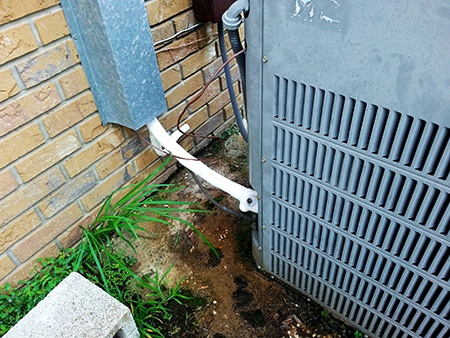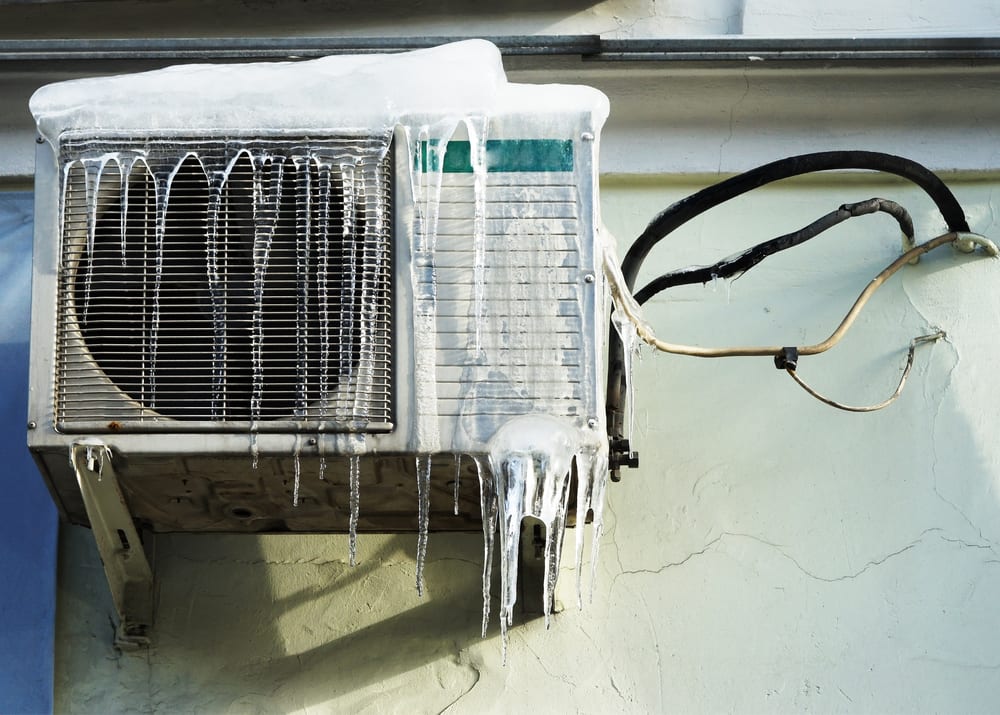Handling a Frozen AC Pipe - Guidance for Addressing the Issue
Handling a Frozen AC Pipe - Guidance for Addressing the Issue
Blog Article
We have noticed the article involving What Do I Do If My AC Pipe Is Frozen down the page on the net and thought it made good sense to share it with you here.

Intro
Uncovering that your a/c pipe is frozen can be worrying, specifically throughout hot summer months when you rely upon your ac unit the most. Recognizing what to do in such a scenario is vital to prevent more damage to your cooling system and guarantee your comfort inside your home.
Recognizing the Causes
Numerous elements can add to the cold of an air conditioning pipeline. Understanding these reasons can assist you deal with the concern efficiently.
Absence of Airflow
One typical cause of an icy air conditioning pipe is inadequate air flow. When the air movement over the evaporator coil is limited, it can cause the coil to go down below freezing temperature level, causing ice formation on the pipeline.
Low Refrigerant Levels
Not enough refrigerant degrees in your AC system can additionally result in an icy pipeline. Low cooling agent levels can create the pressure in the system to go down, leading to the cold of wetness on the evaporator coil.
Winter Conditions
In colder climates, freezing temperatures outside can contribute to the cold of AC pipelines. If your AC unit is not appropriately shielded or if there are leaks in the ductwork, cool air can infiltrate the system, triggering the pipeline to freeze.
Dirty Air Filters
Filthy or clogged up air filters can limit airflow in your a/c system, bring about various problems, consisting of an icy pipeline. It's necessary to replace or cleanse your air filters frequently to make sure correct airflow and avoid ice buildup.
Indications of a Frozen Air Conditioner Pipe
Recognizing the signs of a frozen AC pipeline is crucial for timely action.
Lowered Airflow
If you observe a considerable decline in air movement from your vents, it might show a frozen pipeline.
Ice Buildup on the Pipe
Noticeable ice build-up on the refrigerant line or the evaporator coil is a clear sign of an icy AC pipeline.
Odd Sounds from the Unit
Uncommon audios, such as hissing or bubbling, originating from your AC device can indicate that there's ice existing on the pipe.
Immediate Actions to Take
When faced with a frozen air conditioning pipe, it's important to act rapidly to avoid further damages to your cooling system.
Switching off the AC
The very first step is to switch off your a/c to stop the system from running and exacerbating the concern.
Checking for Blockages
Inspect the location around the indoor device for any blockages that might be obstructing airflow, such as furnishings or drapes.
Defrosting the Pipe
You can make use of mild techniques like positioning towels taken in warm water around the frozen pipeline to help thaw it slowly.
Safety nets
Taking safety nets can assist avoid future events of a frozen a/c pipe.
Routine Maintenance Checks
Set up routine maintenance checks with a specialist HVAC technician to ensure that your a/c system is running successfully.
Altering Air Filters
Consistently change or cleanse your air filters to stop airflow limitations and keep optimal performance.
Shielding Exposed Pipes
If your a/c pipes are revealed to cool temperatures, consider shielding them to avoid cold during winter months.
Looking For Professional Help
If DIY methods stop working to resolve the concern or if you're not sure about exactly how to continue, it's finest to seek aid from a qualified HVAC service technician.
When DIY Methods Fail
If your attempts to thaw the pipe or address various other problems are not successful, it's time to call in a specialist.
Relevance of Hiring a Professional HVAC Technician
A qualified HVAC specialist has the competence and tools required to diagnose and repair problems with your a/c system safely and effectively.
Final thought
Taking care of a frozen AC pipeline can be an irritating experience, but knowing how to react can assist minimize damage and bring back convenience to your home. By recognizing the reasons, identifying the indicators, and taking timely action, you can successfully deal with the concern and avoid future events.
Frozen AC Line: Why It Happens & What To Do About It
A frozen AC line can be a rather peculiar sight in a place like Phoenix, Arizona where nothing ever freezes. In this post, we’ll discuss what makes an air conditioner line frozen – and what you can do about it.
Dirty Air Filters
Did you know that you should be cleaning or replacing your air filters on a monthly basis? Failing to do this can result in airflow issues that, in turn, cause your evaporator coils and lines to freeze over. You’ll notice a buildup of ice on both components, although the buildup on your pipes will, of course, be more evident unless you open your air condition up to reveal the coils.
What To Do About It
Give your air filter a good cleaning if it’s reusable. If not, replace the filter outright. Next, switch your air conditioner’s fan setting on and leave it there for 2-3 hours. This will draw warm air in, helping to thaw your evaporator coil. You can also check out this article for some tips on cleaning the coils themselves if you’d like to speed the process up. Before you switch the unit back to its normal state, make sure the supply vents are completely unobstructed and free of dust or other debris.
If you keep having this issue even after replacing your filters regularly, contact a local HVAC repair company and have them inspect your evaporator coil, ductwork, and any other components that may be at fault. If you live in the Phoenix, Arizona area, give American Home Water and Air a call.
Low Refrigerant Levels/Leakage
What To Do About It
Contrary to what air conditioner “recharge” companies often tell their clients about refrigerant, it should never need to be simply refilled. You see, refrigerant runs in what experts refer to as a “closed loop.” Refrigerant really shouldn’t be leaving that loop. If it is, you’ve got a leak.
Paying someone to come and pump more refrigerant into your system (aka “recharge” it) isn’t the solution. Doing that will simply kick the can down the road. Besides, refrigerant leaks can be harmful to the environment and people in your home.
Rather, you need to take care of the leak with the help of a technician. Check out this article for some more information about dealing with air conditioners that are leaking refrigerant. Before you contact a technician, switch your thermostat to the off position. Then, switch the fan setting on and let it run for 2-3 hours so the unit can thaw.
Improper Temperature Setting
Improper temperature settings can also cause a drop in your air conditioner’s pressure. What many people don’t realize is that air conditioners are actually designed to run when temperatures have fallen above roughly 60 degrees Fahrenheit. If you run the unit when it’s cold outside, you’ll run into many issues, including frozen components.

I found that piece on Why Is Ice On My Outside Air Conditione while exploring the internet. Sharing is caring. One never knows, you may just be helping someone out. Thanks for your time invested reading it.
See Availability Report this page